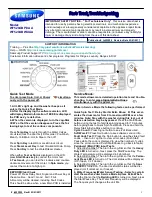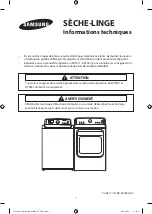
PACKING MATERIAL
Please sort waste materials in accordance with
local guidelines.
DISPOSAL
• When the dishwasher has reached the end of
its service life and is to be disposed of, it
should immediately be made unusable. Pull
out the power cable and cut it as short as
possible.
• The dishwasher is manufactured and labelled
for recycling.
• Contact your local authority for information
about where and how your dishwasher should
be correctly recycled.
BEFORE WASHING FOR THE FIRST
TIME
DEAR CUSTOMER!
We hope that you will have many years of use
from your new machine.
The machine has many features. To make the
most of its functions, we recommend that you
read the operating instructions before using the
machine. The operating instructions include
information on how you can help protect the
environment.
PROGRAMME KEY
Some dishwashers include programme keys in
different languages. Attach the programme key
in the desired language to the top of the door.
THE WATER SOFTENER
In order to achieve good dishwashing results, the
dishwasher needs soft water (water with low
mineral content). Hard water leaves a white
coating on dishes and the dishwasher.
Water hardness is specified using the following
scales: The German water hardness scale (°dH)
and the French water hardness scale (°fH). A
water supply with a water hardness in excess of
6°dH (9°fH) must be softened. This is done
automatically with the aid of the built-in water
softener. In order for the softener to function
optimally, it must be adjusted to the hardness of
the water supply.
Contact the local waterworks to check the water
hardness in your area. Once you have adjusted
the water softener, use detergent and rinse aid
doses suitable for soft water.
ADJUSTING THE WATER SOFTENER
Chapter Settings, page 16 describes how to adjust
the water softener. Don't forget to fill the salt
compartment with salt after adjusting the water
softener.
4





































